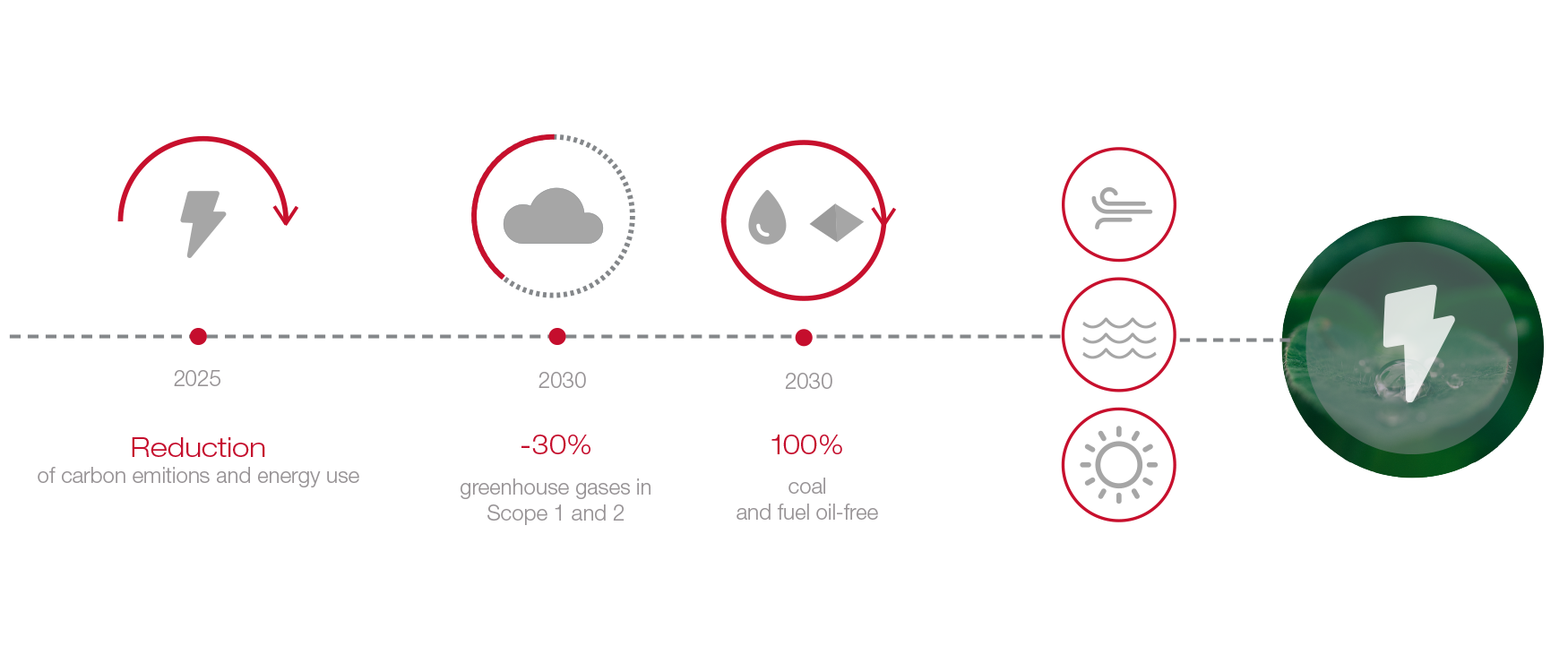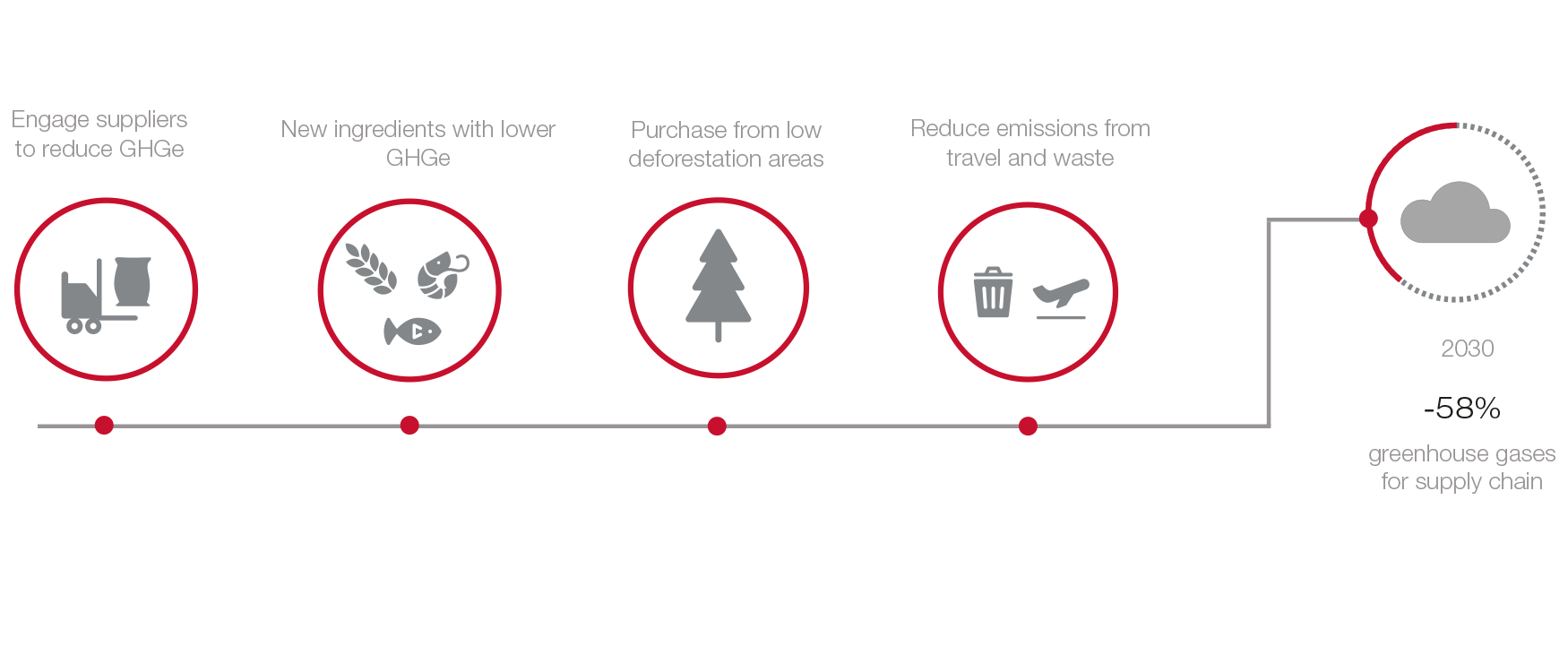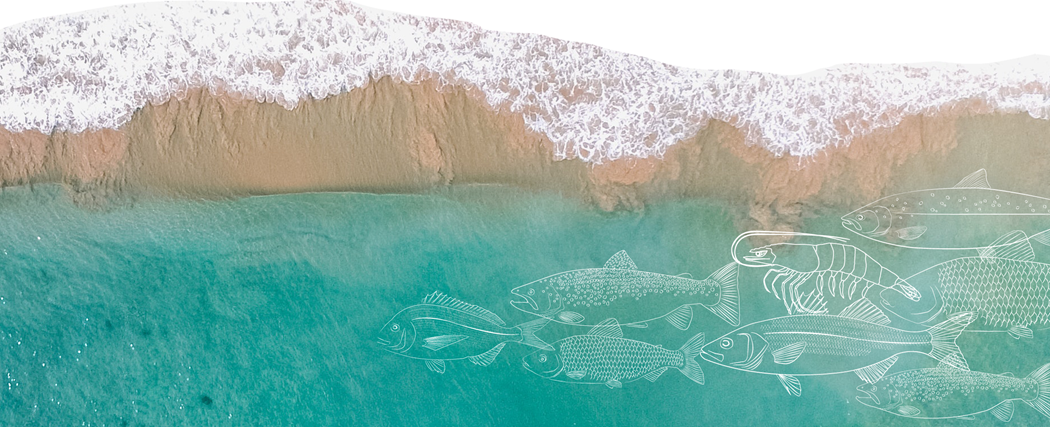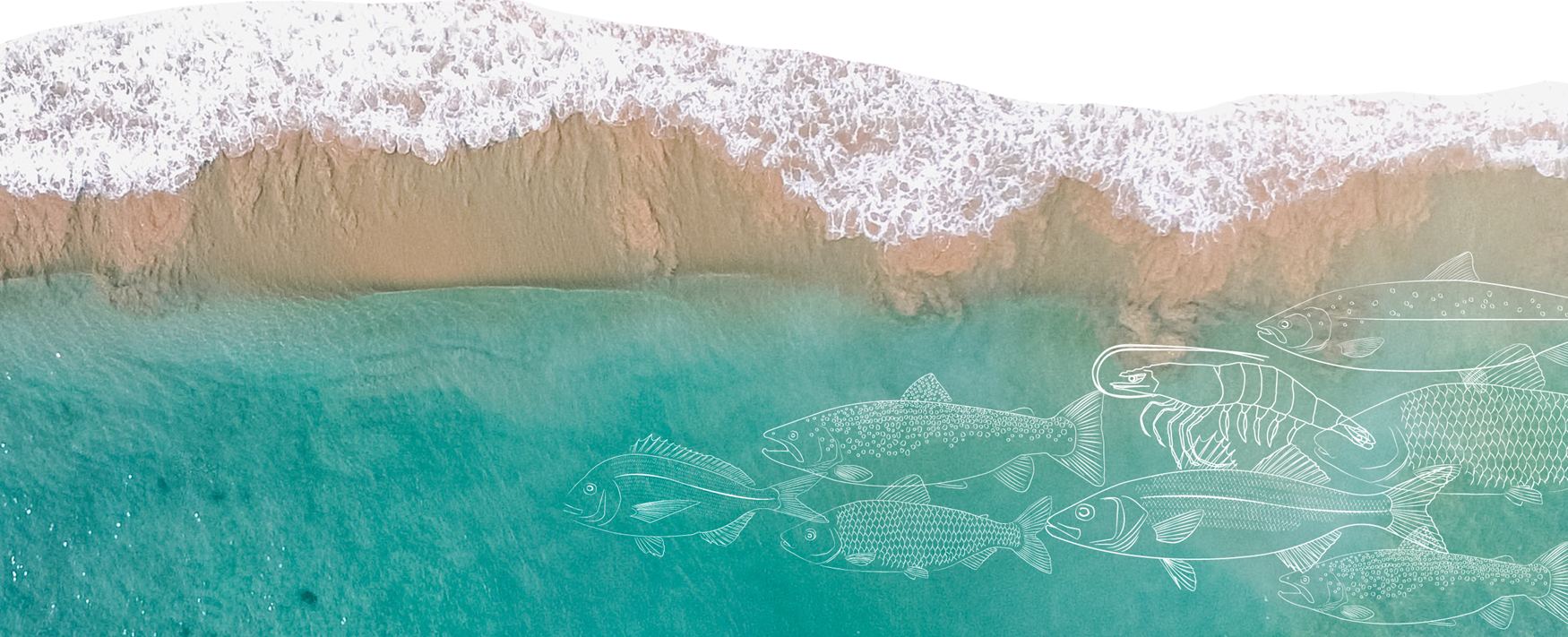Climate & circularity
Committed to setting science-based targets
Through the 2015 Paris Agreement, world governments committed to limiting global temperature rise to well-below 2°C above pre-industrial levels and pursuing efforts to limit warming to 1.5°C. To achieve this, greenhouse gas emissions (GHGe) must halve by 2030 – and drop to net zero by 2050. An emissions reduction target is defined as ‘science-based’ if it is developed in line with the scale of reductions required to keep global warming well below 2°C from pre-industrial levels.
In March 2020 Nutreco committed to set targets for our carbon emissions in line with the principles of science-based targets (SBT). The science-based targets initiative was formed towards the end of 2015 through a partnership between Carbon Disclosure Project (CDP), the UN Global Compact (UNGC), the World Resources Institute (WRI) and World Wildlife Fund (WWF).
Reduction of GHGe from our operations
Skretting has reported the GHG footprint of its operations since 2009. In our previous sustainability ambition (Vision 2020), we made a bold commitment to halve the footprint of our operations by 2020. Reducing carbon emissions and using purchase of carbon credits was part of this ambition. Looking to 2025, Skretting is committed to lead with a true commitment to reduce our carbon emission and to do significant reductions in our energy usage in our operations.

Our targets
Skretting has an ambition to achieve a reduction of 30% of greenhouse gases in our Scope 1 & 2 emissions by 2030 and with a 2018 baseline. Scope 1 are all direct GHGe that come from sources that are owned or controlled by the Skretting. Typical examples are machines and equipment that uses oil and gas in our factories. Scope 2 are indirect GHGe from consumption of purchased energy like electricity, heat or steam. The energy here is generated outside our factories, but transported to our factories as energy.
How to reach our targets
We’ll do this by focusing on energy reduction and increase the use of renewable energy. We will purchase green electricity where it is available. ‘Green electricity’ means electricity produced from renewable sources such as wind, solar and hydro.
Skretting has also ambitions to significantly reduce energy usage when producing our feed. We are aiming for a shift in the use of energy sources. By 2025 Nutreco aims to consume less than 2% of coal and less than 5% of fuel oil. By 2030 the ambition is to be completely coal-free and fuel oil-free.
In March 2020 Nutreco committed to set targets for our carbon emissions in line with the principles of science-based targets (SBT).
Reducing GHGe from our raw materials
Scope 3 emissions are the largest source of a Skretting’s emissions when we produce our feed. Some studies we have undertaken shows that Scope 3 emissions account for more than 90% of the total emissions of a product when we look at total emissions delivered at factory gate. To date, Skretting has been focusing our efforts on Scopes 1 and 2, where we have more direct control.
However, as the climate change challenges are growing there is a need to reduce GHGe wherever possible. This means also reducing Scope 3 emissions (emissions in our value chain). Scope 3 emissions do fall outside of Skretting’ s direct control and ownership. This means it is more difficult to collect scope 3 data and the inherent control and ownership structure can create challenges when attempting to reduce these emissions.

Our reduction targets Scope 3 emissions
Under the SBT programme, we have committed to a 58% reduction per unit of value-added by 2030 in GHGe for our supply chain with a 2018 baseline. Our Scope 3 emissions are those created indirectly through our purchasing of raw materials and usage of external services. The emissions are dominated by the impact of crop production and land use change.
How to reach our targets
To meet our Scope 3 goal, Skretting will engage with our suppliers. We will work with suppliers that also have set SBTs, encourage suppliers to set their own SBT targets and work with suppliers to reduce their GHGe. We will look to replace existing ingredients with alternatives that have lower GHGe and continue our work to support and develop novel ingredients. We will seek to minimise GHGe that are a result of deforestation and other land use change. Reductions in this area can come from shifting our purchases from areas with a high rate of deforestation to areas with less deforestation. In cases where we might buy from areas with a high deforestation rate, Skretting will have an ambition of buying deforestation free material – like for example soy. Skretting will also seek to reduce Scope 3 emissions that are linked to our operations like travel and waste.

